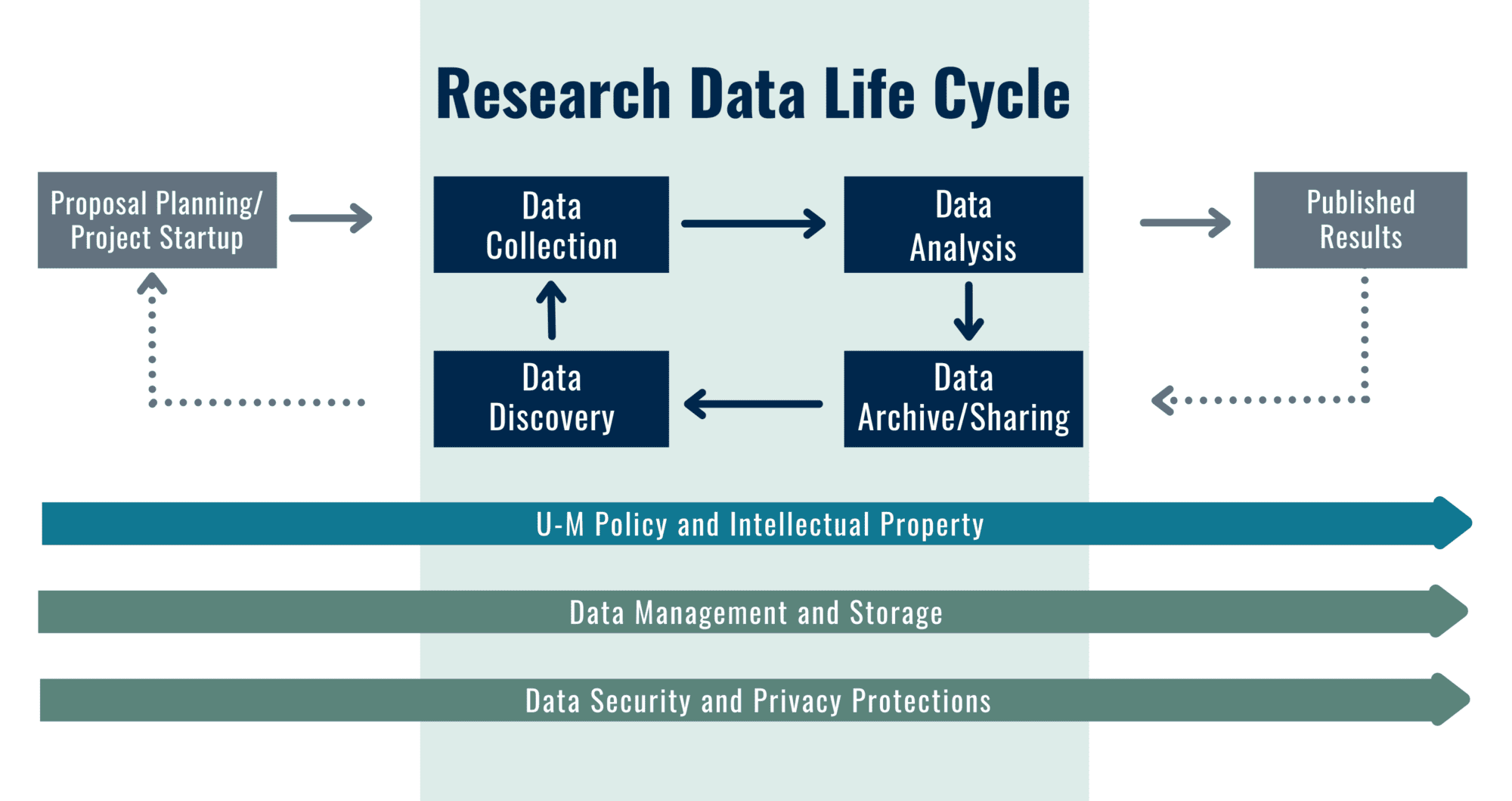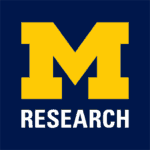Research Data Stewardship Initiative
Research datasets form the backbone of scholarly work, from qualitative social sciences to biomedicine. Responsible and intentional stewardship of these data can increase the transparency, rigor and public value of research, and serve the broader mission of the university. Along similar lines, most U.S. funding agencies, major scholarly publishers and scholarly societies are increasing requirements and expectations for how research data are managed and preserved, with an eye toward increasing public access.
With this in mind, the U-M Research Data Stewardship Initiative (RSDI) has been launched to help the U-M research community navigate the evolving research data landscape, including:
- Curating information and resources for the U-M research community around best practices in data stewardship across the research data life cycle
- Convening a working group of existing data support units across U-M to provide coordinated and consistent guidance and training opportunities (e.g., webinars, workshops, agency-specific toolkits)
- Assessing existing U-M policies related to research data and developing additional policy guidance as needed
- Identifying unmet data stewardship needs across the research community by engaging with researchers through surveys, town halls, and listening sessions
Read more about the launch of the Research Data Stewardship Initiative. (link pending)
This page will be updated as more U-M guidelines and resources are created.
Research Data Stewardship Resources
The U-M Office of the Vice President for Research (OVPR) has partnered with the U-M Library, Medical School Regulatory Affairs, and many other units across U-M to develop guidance for faculty, students, and staff on best practices for data stewardship across the research data life cycle.
Understanding the Research Data Life Cycle
Successful stewardship of research data begins in a project’s earliest stages. There are a number of points along the research data life cycle where relevant policies, longer-term data management and storage needs, and data security needs must be considered.

Definitions
What are research data?
Even the term “data” itself carries a wide range of meanings depending on discipline and research method. According to NIH.gov, research data includes the recorded factual material commonly accepted in research communities as necessary to validate and replicate findings, regardless of whether the data are used to support scholarly publications. This definition would exclude preliminary analyses, completed case report forms, drafts of publications, plans for future research, peer reviews, or communications with colleagues. But in some disciplines, research data also includes physical objects, such as specimens, archival materials, collections, and notebooks. Below are some common definitions of other key terms across the research data life cycle.
Data Management Plan
A document describing the actions to be taken over the course of the life cycle of a research dataset to ensure that it is well managed, and will eventually be findable, accessible, interoperable and reusable by others. Required by many funding agencies.
FAIR Data
An increasingly common term describing efforts to make research data more Findable, Accessible, Interoperable, and Reusable (FAIR). Definition adapted from Go-Fair.org.
Metadata
Information about a research data set that is structured (often in machine-readable format) for purposes of search and retrieval. Metadata elements may include basic information (e.g. title, author, date created, etc.) and/or specific elements inherent to datasets (e.g., spatial coverage, time periods, provenance). Definition adapted from DataCurationNetwork.org.
Open Access
A general term typically used to describe free access to datasets or publications with no restrictions on accessibility, (re)use, and redistribution (distinct from public access, below). Definition adapted from UNESCO.org.
Preservation
The series of managed activities necessary to ensure continued access and readability to research data sets for as long as necessary with adequate security and risk mitigation. Definition adapted from DPCOnline.org.
Public Access
Data are readily discoverable and accessible to other researchers and people outside of the research project in which the data were generated. Public access is distinct from open access, defined above, in that something may be publicly available but may also have some restrictions on accessibility, reuse, or redistribution. Information on federal agencies’ public access policies can be found in the proposal development section of the guidance and policies page.
Repository
A specialized database that preserves, stewards, and provides access to many types of digital datasets in a variety of formats. Data repositories may focus on a specific field (such as ICPSR for Social Sciences), an institution (such as Deep Blue Data for U-M), or serve a general audience (such as Dryad). Definition adapted from CASRAI.org.
Relevant U-M policies/guidelines
Several current university policies address aspects of research data use and management. U-M is currently assessing what clarifications are needed for our internal policies related to research data, but in the meantime, the below policies continue to apply.
Related U-M Guidance
- U-M Best Practices for the Stewardship of Research Data (also linked above)
- FAQ from the General Counsel’s Office: Guidelines for Access to and Use of Research Data
- Statement on Stewardship | Human Resources University of Michigan (see section “Stewardship of Information and Technology Resources”)
Relevant U-M Policies
Further Reading
Data Sharing
- Nature: Ten Reasons to Share Your Data
- PLOS: – Ten Simple Rules for Improving Research Data Discovery
- USGS: Why Share Your Data?
- National Academy of Medicine: Sharing Health Data: The Why, the Will, and the Way Forward
- APLU – Public Access to Research Data
Reproducibility
- National Academies of Sciences, Engineering, and Medicine – Reproducibility and Replicability in Science
- NIH – Rigor and Reproducibility
Open Science
- APA – An Introduction to Open Science
- Center for Open Science: The Open Research Lifecycle (video)
International Efforts
- FAIR data principles: https://www.go-fair.org/fair-principles/
- Research Data Alliance
- UNESCO – Recommendation on Open Science
- OECD – Council Recommendation Access to Research Data from Public Funding
FAQs
What about humanities scholarship? What does data look like there and does this apply?
What is the difference between open access and public access?
How does software and/or code fit into this guidance?
Many journals require software and/or code for an analysis to be made available at the time of publication too. Always consult your journal’s policies before agreeing to the terms of publication so you know what you are agreeing to.
What about sharing of publications?
No U-M policy regarding publishing, but federal agencies also have requirements for making publications open/available. U-M libraries has a research guide on open access publishing here.
What about sharing requirements for materials or other physical samples?
What about data that I collected at another institution, before I began my position at U-M? Similarly, what happens if I leave U-M?
Does this guidance apply to everyone at U-M including students, faculty, and staff?
Yes
Who owns the research data I collected while working at U-M?
How long must I keep a copy of my data?
What do I do if I leave the institution?
How will this affect my work now? I already publish my work
Do I need permission from someone to do ____?
What do I do now? What’s faculty responsibility, university’s responsibility, etc?
What is the difference between NSF and NIH’s public access policies/initiatives and U-M’s expectations for data sharing?
What is the difference between “research data” and the “research record”?
Questions?
We are interested in hearing from you! If you have any questions or relevant information/resources to add to this site, please complete this form.
